
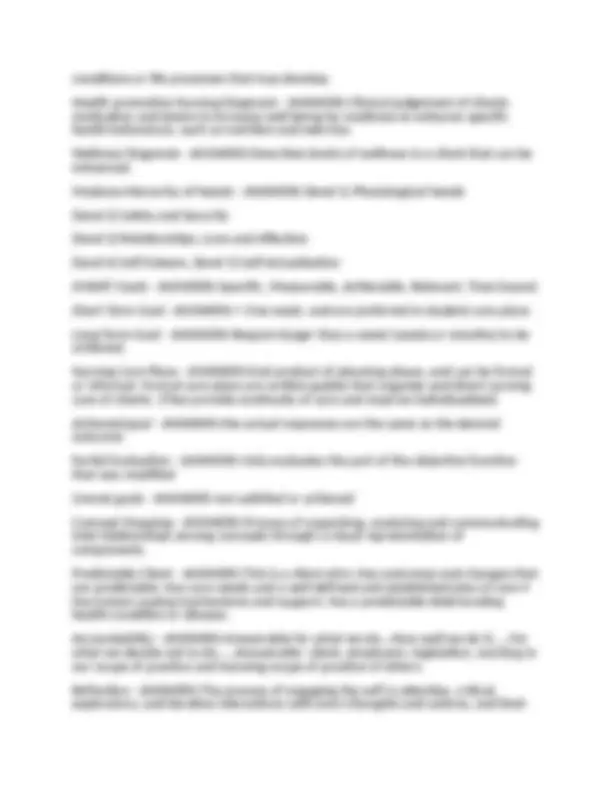
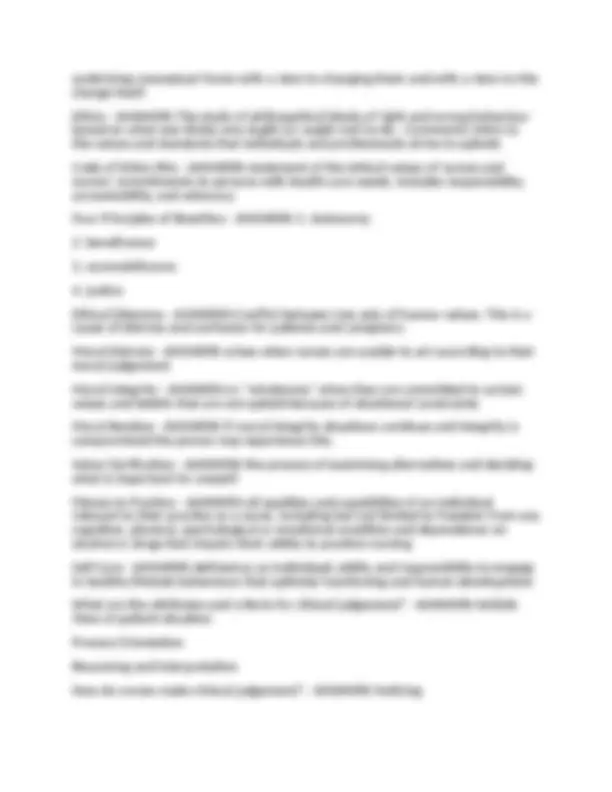
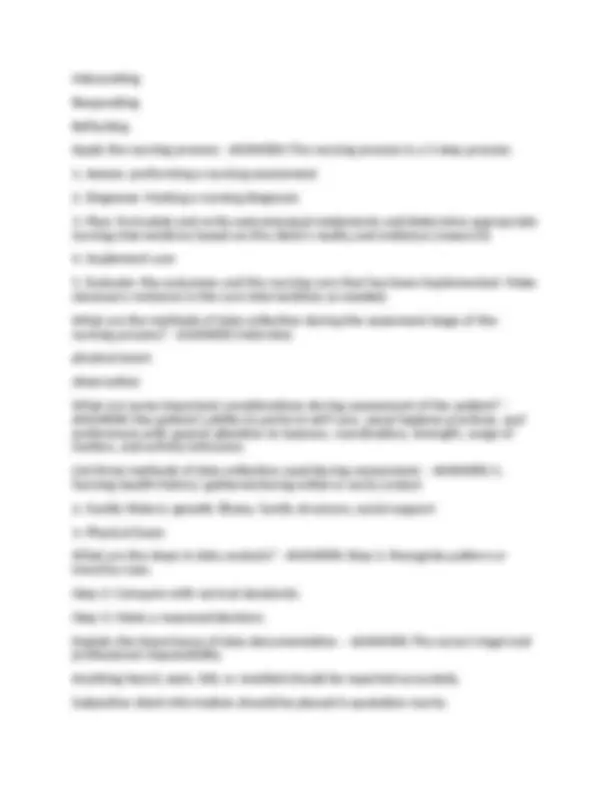
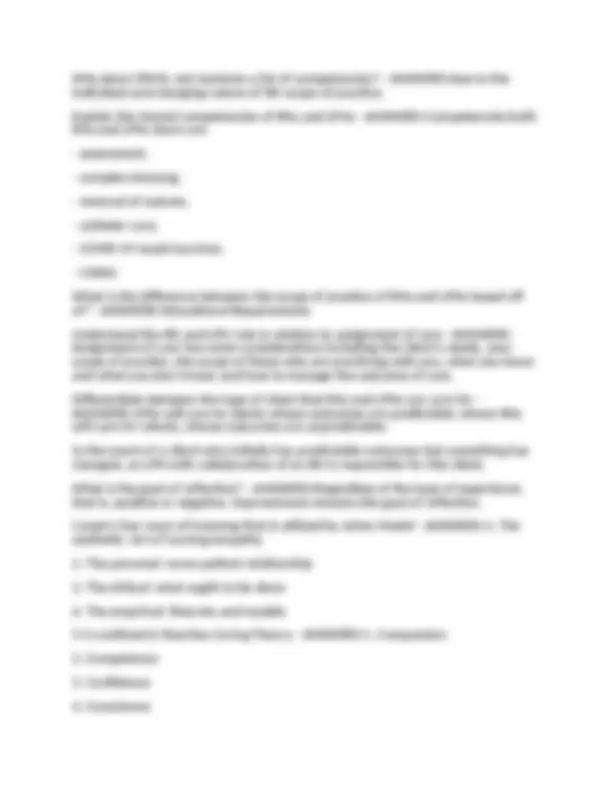
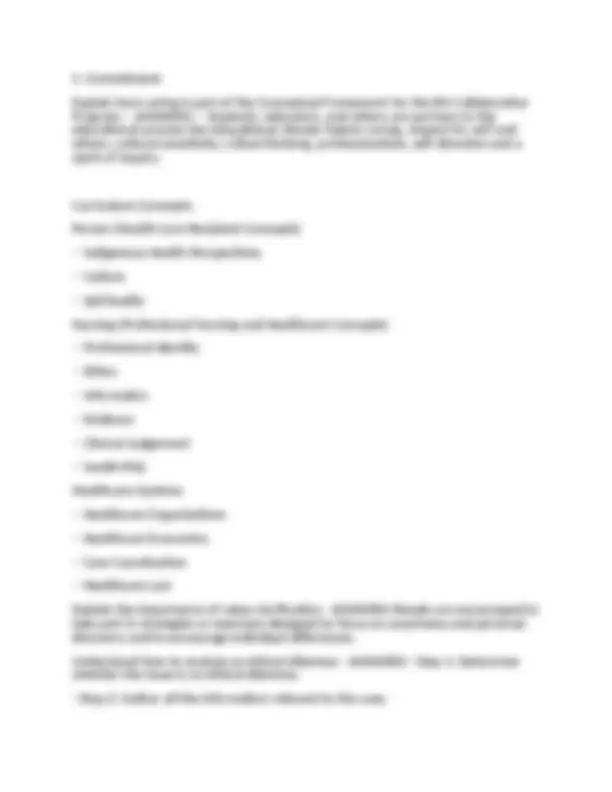
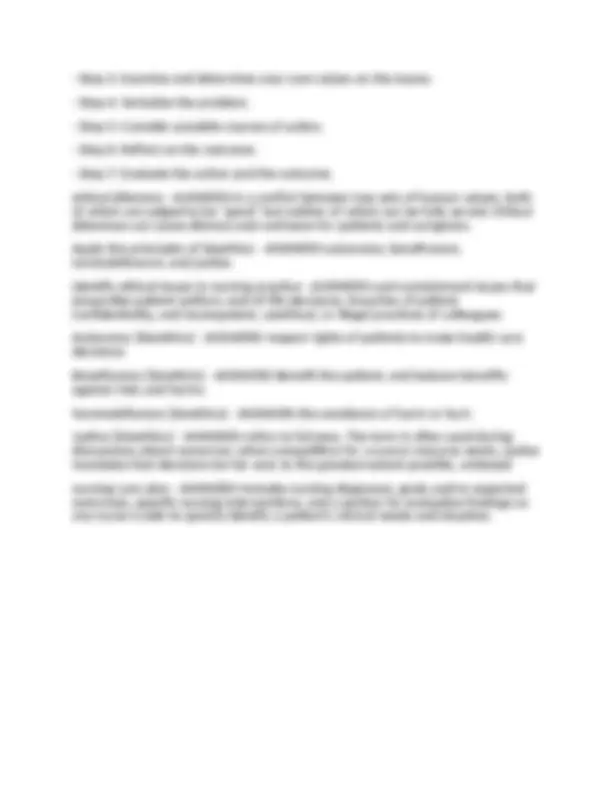


Study with the several resources on Docsity

Earn points by helping other students or get them with a premium plan


Prepare for your exams
Study with the several resources on Docsity

Earn points to download
Earn points by helping other students or get them with a premium plan
Community
Ask the community for help and clear up your study doubts
Discover the best universities in your country according to Docsity users
Free resources
Download our free guides on studying techniques, anxiety management strategies, and thesis advice from Docsity tutors
Nurs 1004 FINAL STUDY GUIDE FALL 2025 QUESTIONS WITH COMPLETE ANSWERS 2025 LATEST UPDATE GRADED A+. Nurs 1004 FINAL STUDY GUIDE FALL 2025 QUESTIONS WITH COMPLETE ANSWERS 2025 LATEST UPDATE GRADED A+.
Typology: Exams
1 / 10

This page cannot be seen from the preview
Don't miss anything!







Clinical Judgement - ANSWERS-An interpretation or conclusion about a patient's needs, concerns, or health problems, and/or the decision to take action (or not), use or modify standard approaches, or improvise new ones as deemed appropriate by the patient's response Clinical Decision Making Model - ANSWERS-The nursing process. Assessment, diagnoses, planning, interventions, evaluation. ADPIE Nursing Process - ANSWERS-Five step process, 1. asses: perform a nursing assesment
of reference and are a result of the nurse's or other health care team member's response to care, including textbooks, a nurse's experience, and patterns noticed in other clients with similar presentations and conditions. Cue - ANSWERS-information that a nurse obtains through use of the senses. Validation - ANSWERS-the action of checking or proving the accuracy of something Inference - ANSWERS-a conclusion reached on the basis of evidence and reasoning Objective data - ANSWERS-Are observations or measurements of a client's health status. (i.e. blood pressure) Subjective Data - ANSWERS-Are client's verbal descriptions of their health concerns. obtained through the health history and the nurse's questions and the explanation the client provides(i.e. Patient states they are nauseous) Cluster Data - ANSWERS-A set of signs or symptoms that are grouped together in a logical way. Medical Diagnosis - ANSWERS-The identification of a disease condition on the basis of specific evaluation of signs and symptoms. Nursing Diagnosis - ANSWERS-A clinical judgement about client responses to an actual or potential health problem. (Focuses on a clients actual or potential response to a health problem) Collaborative Problem - ANSWERS-An actual or potential complication that nurses monitor to detect a change in client status NANDA - ANSWERS-•Means of translating nursing observations and assessments into standard conclusions in a common nomenclature (Language) •Provides a precise definition of the client's needs •Gives all members of the health care team a common language to use Diagnostic Reasoning - ANSWERS-A process of using assessment data to create a nursing diagnosis Defining Characteristics - ANSWERS-Clinical criteria or assessment finding that help confirm an actual nursing diagnosis. Clinical Criteria - ANSWERS-Objective or subjective signs and symptoms that lead to a diagnostic conclusion. Actual Nursing Diagnosis - ANSWERS-Describes human responses to health conditions or life processes. Risk Nursing Diagnosis - ANSWERS-Describes human responses to health
underlying conceptual frame with a view to changing them and with a view on the change itself. Ethics - ANSWERS-The study of philosophical ideals of right and wrong behaviour based on what one thinks one ought (or ought not) to do. -Commonly refers to the values and standards that individuals and professionals strive to uphold. Code of Ethics RNs - ANSWERS-statement of the ethical values of nurses and nurses' commitments to persons with health care needs. Includes responsibility, accountability, and advocacy Four Principles of Bioethics - ANSWERS-1. Autonomy
Interpreting Responding Reflecting Apply the nursing process - ANSWERS-The nursing process is a 5-step process:
Make sure the client considers the goals / outcomes important and values them. Identify Appropriate Goals... - ANSWERS-Client-Centered Short-Term Long-Term Client-Centered Goal - ANSWERS-A specific and measurable behavioural response that reflects highest level of wellness and independence Short-Term Goal - ANSWERS-An objective client behaviour or response expected within hours to a week Long-Term Goal - ANSWERS-An objective client behaviour or response expected within days, weeks, or months What is the role of the client in goal setting? - ANSWERS-mutual goal setting, active participation and including the, and their family. Why is concept mapping used in clinical? - ANSWERS-Concept mapping is used in clinical to mimic the thought process of the RNs, analyze relationships in the data, establish priorities, build on previous knowledge, facilitate critical thinking, guide patient care and to have a working/live document. Process of concept mapping - ANSWERS-consists of 7 steps: 1.Assessment 2.Organizing the data a) Reason for admission (medical dx) b) List the symptoms c) Cluster related symptoms d) Assign data cluster to a Gidden's concepts e) Formulate a nursing dx for each category 3.Consider related factors 4.Determine key assessment 5.Prioritize 6.Analyze relationships and link nursing diagnosis concepts 7.Develop nursing care plan Are there limits on an RNs scope of practice? - ANSWERS-They DO NOT have limitations on the complexity of a client they can care for.
Why does CRNNL not maintain a list of competencies? - ANSWERS-due to the individual and changing nature of RN scope of practice. Explain the shared competencies of RNs and LPNs - ANSWERS-Competencies both RNs and LPNs share are:
· Step 3: Examine and determine your own values on the issues. · Step 4: Verbalize the problem. · Step 5: Consider possible courses of action. · Step 6: Reflect on the outcome. · Step 7: Evaluate the action and the outcome. ethical dilemma - ANSWERS-is a conflict between two sets of human values, both of which are judged to be "good" but neither of which can be fully served. Ethical dilemmas can cause distress and confusion for patients and caregivers. Apply the principles of bioethics - ANSWERS-autonomy, beneficence, nonmaleficence, and justice. Identify ethical issues in nursing practice - ANSWERS-cost-containment issues that jeopardize patient welfare, end-of-life decisions, breaches of patient confidentiality, and incompetent, unethical, or illegal practices of colleagues Autonomy (bioethics) - ANSWERS-respect rights of patients to make health care decisions Beneficence (bioethics) - ANSWERS-Benefit the patient, and balance benefits against risks and harms Nonmaleficence (bioethics) - ANSWERS-the avoidance of harm or hurt. Justice (bioethics) - ANSWERS-refers to fairness. The term is often used during discussions about resources: when competition for a scarce resource exists, justice mandates that decisions be fair and, to the greatest extent possible, unbiased nursing care plan - ANSWERS-includes nursing diagnoses, goals and/or expected outcomes, specific nursing interventions, and a section for evaluation findings so any nurse is able to quickly identify a patient's clinical needs and situation.